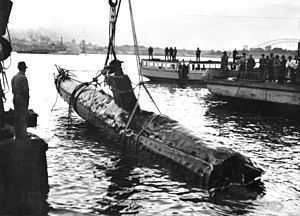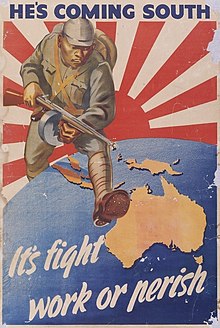The end of World War II in the Pacific Theater took place on September 2, 1945. Japan formally surrendered, on the U.S.S. Missouri in Tokyo Bay.
Some people don't think history is important. The war and peace strongly influenced what came after. The outcome of that war shaped the modern era around the Pacific rim every bit as much as the tectonic plate activities that caused a minor earthquake in Beverly Hills over the weekend. I am always surprised at how little some people know in our country know, not only about our history, but about the other participants with us in it.
For example, very few know that Australia was also attacked more than 100 times, beginning not long after we were attacked at Pearl Harbor, in February 1942. In that first attack, an exclusively aerial one, the city of Darwin was hit with more bombs than were rained down on Pearl Harbor. Sydney and Newcastle were attacked by Japanese midget submarines, including the accidental sinking of a ferry while attempting to sink a heavy destroyer, the USS. Chicago, which was later sunk during the 1943 Guadalcanal campaign.

A Japanese Ko-hyoteki class midget submarine, believed to be Midget No. 14, is raised from
Sydney Harbour the day after the attack.
Since 2008, the first Wednesday of September is celebrated as the Battle for Australia Day. It's not the most accurate term for a holiday, in the sense that there was no specific battle or campaign launched by the Japanese to invade Australia, in the sense that there was the Battle of Britain, or the proposed Operation Sea Lion that was planned to follow with Nazi amphibious landings in the UK.
The holiday commemorates a series of naval battles that were intended to separate Australia from the U.S., with Australia putting their forces with the U.S., under the U.S. General, Douglas Mac Arthur. Australia was the staging ground for the southwestern Pacific war effort.
It's important to learn history, both world history and American history (all of it). It's important to know what is revisionist history and myth as distinct from more factual and honest history. There may have been no formal Battle for Australia, no formal plans for invasion (although the Japanese navy had lobbied for it) but Australia was certainly attacked directly, every bit as much as the U.S. at Pearl Harbor, and certainly made enormous sacrifices for the war effort, and suffered comparable losses. The Japanese surrender on Sept. 2, 1945, the Battle for Australia day, those represent important events in our relatively recent history. Learn them, and remember them, honor them.
U.S. General Douglas MacArthur, Commander of Allied forces in the Pacific, with Australian Prime Minister John Curtin, left; and an Australian propaganda poster from 1942, below.

Some people don't think history is important. The war and peace strongly influenced what came after. The outcome of that war shaped the modern era around the Pacific rim every bit as much as the tectonic plate activities that caused a minor earthquake in Beverly Hills over the weekend. I am always surprised at how little some people know in our country know, not only about our history, but about the other participants with us in it.
For example, very few know that Australia was also attacked more than 100 times, beginning not long after we were attacked at Pearl Harbor, in February 1942. In that first attack, an exclusively aerial one, the city of Darwin was hit with more bombs than were rained down on Pearl Harbor. Sydney and Newcastle were attacked by Japanese midget submarines, including the accidental sinking of a ferry while attempting to sink a heavy destroyer, the USS. Chicago, which was later sunk during the 1943 Guadalcanal campaign.

A Japanese Ko-hyoteki class midget submarine, believed to be Midget No. 14, is raised from
Sydney Harbour the day after the attack.
Since 2008, the first Wednesday of September is celebrated as the Battle for Australia Day. It's not the most accurate term for a holiday, in the sense that there was no specific battle or campaign launched by the Japanese to invade Australia, in the sense that there was the Battle of Britain, or the proposed Operation Sea Lion that was planned to follow with Nazi amphibious landings in the UK.
The holiday commemorates a series of naval battles that were intended to separate Australia from the U.S., with Australia putting their forces with the U.S., under the U.S. General, Douglas Mac Arthur. Australia was the staging ground for the southwestern Pacific war effort.
It's important to learn history, both world history and American history (all of it). It's important to know what is revisionist history and myth as distinct from more factual and honest history. There may have been no formal Battle for Australia, no formal plans for invasion (although the Japanese navy had lobbied for it) but Australia was certainly attacked directly, every bit as much as the U.S. at Pearl Harbor, and certainly made enormous sacrifices for the war effort, and suffered comparable losses. The Japanese surrender on Sept. 2, 1945, the Battle for Australia day, those represent important events in our relatively recent history. Learn them, and remember them, honor them.
U.S. General Douglas MacArthur, Commander of Allied forces in the Pacific, with Australian Prime Minister John Curtin, left; and an Australian propaganda poster from 1942, below.


Tojo never made it to Darwin.
ReplyDelete